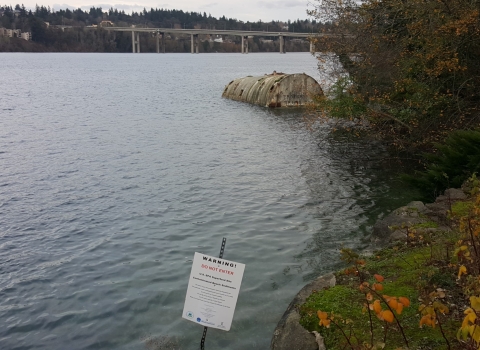The U.S. Fish and Wildlife Service announces the final recovery plan for the Kentucky glade cress, a plant listed as threatened under the Endangered Species Act (ESA). A draft recovery plan was published in the Federal Register in March of 2021 and is now being finalized. This plan includes specific criteria for determining when the Kentucky glade cress should be considered for delisting, removing it from the Federal List of Endangered and Threatened Plants. It also lists site-specific actions that will be necessary to meet those criteria and estimates the time and costs required for implementing actions necessary to achieve recovery. The final recovery plan for the Kentucky glade cress is now available at the following website:
https://www.fws.gov/node/266264
As given by the name, the Kentucky glade cress is native to Kentucky. The species was listed as threatened in May 2014, primarily due to threats associated with loss or alteration of its habitat and was deemed to have a high recovery potential. Recovery actions for the species will focus on protection and management of current habitat – open areas with shallow or rocky soils known as glades. There may also be reintroductions of the species into suitable habitat areas in the future.
In order to promote and support the conservation and survival of endangered species and threatened species, and provide a transparent path to achieving recovery, we and our partners develop and implement recovery plans. Recovery plans are unique to each species and serve as central organizing tools that provide important guidance on methods of minimizing threats to listed species, such as restoring and acquiring habitat, removing introduced predators or invasive species invasive species
An invasive species is any plant or animal that has spread or been introduced into a new area where they are, or could, cause harm to the environment, economy, or human, animal, or plant health. Their unwelcome presence can destroy ecosystems and cost millions of dollars.
Learn more about invasive species , conducting surveys, monitoring individual populations, and breeding species in captivity and releasing them into their historical range. Recovery plans identify measurable and objective criteria against which progress toward recovery of a species can be tracked over time. Recovery plans are guidance and not regulatory documents, and no agency or entity is required by the ESA to implement actions in a recovery plan.
For more information on the Kentucky glade cress, visit the Service’s Species Profile below or contact Jennifer Garland at jennifer_garland@fws.gov.
https://ecos.fws.gov/ecp/species/698
The mission of the U.S. Fish and Wildlife Service is working with others to conserve, protect, and enhance fish, wildlife, plants, and their habitats for the continuing benefit of the American people. For more information on our work and the people who make it happen, visit www.fws.gov/southeast. Connect with us on Facebook at www.facebook.com/usfwssoutheast, follow our tweets at www.twitter.com/usfwssoutheast, watch our YouTube Channel at http://www.youtube.com/usfws, and download photos from our Flickr page at http://www.flickr.com/photos/usfwssoutheast.


